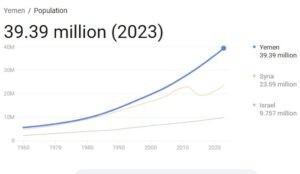Africa surpasses 150,000 deaths linked to jihad groups
in past decade
Israel can’t be blamed, and so as far as the establishment media is concerned, there is no news here.
Africa Surpasses 150,000 Deaths Linked to Militant Islamist Groups in Past Decade
Africa Center for Strategic Studies, July 28, 2025:
Escalating violence in the Sahel and Somalia has caused fatalities linked to militant Islamist groups in Africa to surge by 60 percent since 2023.
Militant Islamist groups in Africa continue to be highly active agents of instability across five theaters on the continent. The 22,307 fatalities linked to these groups over the past year sustain a record level of lethality observed since 2023 and represent a 60-percent increase from the 2020-2022 period.
Nearly half of the fatalities (10,685) in the past year have been in the Sahel. Somalia represents roughly a third of the continental fatalities (7,289). Along with the Lake Chad Basin, these three regions account for 99 percent of the militant Islamist-linked fatalities in Africa the past year.
Battle-related fatalities have increased in every theater over the past year.
All five African theaters (including Mozambique and North Africa) remain highly dynamic with militant insurgents mounting offensive operations in each, especially in the Sahel and Somalia. Battle-related fatalities have increased in every theater over the past year—resulting in a 14-percent rise of battle-related deaths across the continent (15,678).
The past year has also seen militant Islamists groups in the Sahel and Somalia expand their hold on territory. Across Africa, an estimated 950,000 square kilometers (367,000 square miles) of populated territories are outside government control due to militant Islamist insurgencies. This is equivalent to the size of Tanzania.
Over the past decade, Somalia and the Lake Chad Basin countries (Nigeria, Cameroon, Chad, and southeastern Niger) have been the two theaters that have consistently experienced the greatest levels of violence—each typically accounting for at least a quarter of all annual fatalities. This shifted in 2022 with the surge of fatalities in the Sahel. As a result of the rapid deterioration of security in the Sahel, Somalia and the Sahel have now experienced more militant Islamist-related fatalities over the past decade (each over 49,000) than any other region. The Lake Chad Basin countries have suffered an estimated 39,000 fatalities over this timeframe. Collectively, Africa has experienced roughly 155,000 militant Islamist group-linked deaths over the past decade….
============================================================================================










